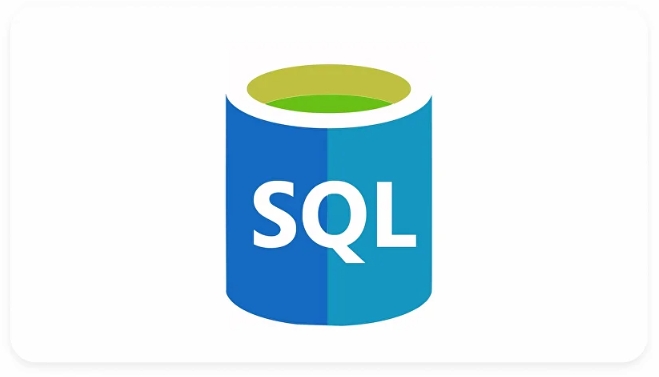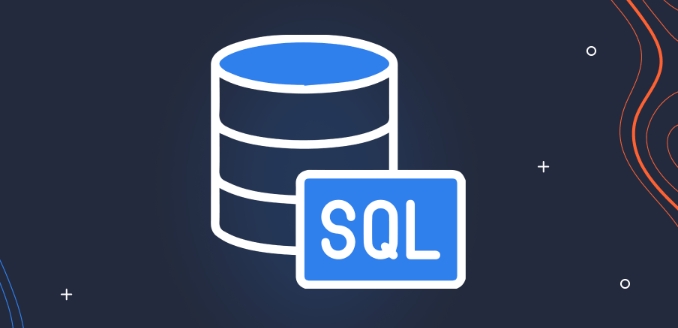Table name change is usually implemented in SQL using the RENAME TABLE or ALTER TABLE command. 1. MySQL, MariaDB and other databases use RENAME TABLE old_table_name TO new_table_name; syntax, supporting batch operations; 2. SQL Server requires sp_rename stored procedure, and the syntax is EXEC sp_rename 'old_table_name', 'new_table_name'; 3. PostgreSQL uses ALTER TABLE old_table_name RENAME TO new_table_name; Before modifying the table name, you need to pay attention to: dependent objects such as views and triggers may fail and must be updated simultaneously; operators must have ALTER and DROP permissions; production environments should avoid peak operations; in any case, it is recommended to back up data in advance to prevent losses caused by incorrect operations.

Changing table names is not difficult in SQL, but you have to pay attention to the syntax and usage scenarios. The writing methods supported by different database systems may vary slightly, but they are basically completed using RENAME statements. The key is to ensure that permission confirmation and data backup are done before the operation to avoid affecting other dependent objects.

Use RENAME TABLE statement
The most common way is to modify the table name through the RENAME TABLE command, which is very common in databases such as MySQL and MariaDB. The syntax structure is as follows:
RENAME TABLE old_table_name TO new_table_name;
For example, if you want to rename the original users_old table to users , you can write it like this:

RENAME TABLE users_old TO users;
The advantage of this method is that multiple tables can be renamed at once (separated by commas in the middle), which is suitable for batch processing. But be aware that the user who executes this command must have ALTER and DROP permissions for the corresponding table.
Use ALTER TABLE (for some databases)
In some database systems, such as SQL Server, it does not directly support RENAME TABLE , but requires the sp_rename stored procedure. Oracle and PostgreSQL also have their own ways.

Taking SQL Server as an example, the syntax is as follows:
EXEC sp_rename 'old_table_name', 'new_table_name';
The writing rules of PostgreSQL are different, and you need to use ALTER TABLE ... RENAME TO :
ALTER TABLE old_table_name RENAME TO new_table_name;
Therefore, when using it, be sure to check the support status of your current database and do not copy the syntax at all.
Issues to note before changing table names
- Dependency objects will fail : If the original table is referenced by a view, stored procedure, or trigger, these objects may have errors after rename and need to be updated together.
- Permissions issue : Some databases have strict permission control over renaming operations. It is best to confirm whether there are sufficient permissions before execution.
- Careful operation in the production environment : It is risky to directly replacing the table name on the online system. It is recommended to verify it in the test environment first, and then arrange operation during the peak period.
- Backup is the first : Even if it is just a name change, it is recommended to take a snapshot or backup in advance to prevent data loss due to incorrect operations.
Basically that's it. The details of different databases vary slightly, but the overall idea is consistent. Master the grammar and pay attention to the scope of influence. Changing the table name is actually not complicated, but it is easy to ignore potential side effects.
The above is the detailed content of How to rename a table in SQL?. For more information, please follow other related articles on the PHP Chinese website!

Hot AI Tools

Undress AI Tool
Undress images for free

Undresser.AI Undress
AI-powered app for creating realistic nude photos

AI Clothes Remover
Online AI tool for removing clothes from photos.

Clothoff.io
AI clothes remover

Video Face Swap
Swap faces in any video effortlessly with our completely free AI face swap tool!

Hot Article

Hot Tools

Notepad++7.3.1
Easy-to-use and free code editor

SublimeText3 Chinese version
Chinese version, very easy to use

Zend Studio 13.0.1
Powerful PHP integrated development environment

Dreamweaver CS6
Visual web development tools

SublimeText3 Mac version
God-level code editing software (SublimeText3)
 The Purpose of SQL: Interacting with MySQL Databases
Apr 18, 2025 am 12:12 AM
The Purpose of SQL: Interacting with MySQL Databases
Apr 18, 2025 am 12:12 AM
SQL is used to interact with MySQL database to realize data addition, deletion, modification, inspection and database design. 1) SQL performs data operations through SELECT, INSERT, UPDATE, DELETE statements; 2) Use CREATE, ALTER, DROP statements for database design and management; 3) Complex queries and data analysis are implemented through SQL to improve business decision-making efficiency.
 SQL: The Language, MySQL: The Database Management System
Apr 21, 2025 am 12:05 AM
SQL: The Language, MySQL: The Database Management System
Apr 21, 2025 am 12:05 AM
The relationship between SQL and MySQL is: SQL is a language used to manage and operate databases, while MySQL is a database management system that supports SQL. 1.SQL allows CRUD operations and advanced queries of data. 2.MySQL provides indexing, transactions and locking mechanisms to improve performance and security. 3. Optimizing MySQL performance requires attention to query optimization, database design and monitoring and maintenance.
 MySQL: A Practical Application of SQL
May 08, 2025 am 12:12 AM
MySQL: A Practical Application of SQL
May 08, 2025 am 12:12 AM
MySQL is popular because of its excellent performance and ease of use and maintenance. 1. Create database and tables: Use the CREATEDATABASE and CREATETABLE commands. 2. Insert and query data: operate data through INSERTINTO and SELECT statements. 3. Optimize query: Use indexes and EXPLAIN statements to improve performance.
 SQL vs. MySQL: Clarifying the Relationship Between the Two
Apr 24, 2025 am 12:02 AM
SQL vs. MySQL: Clarifying the Relationship Between the Two
Apr 24, 2025 am 12:02 AM
SQL is a standard language for managing relational databases, while MySQL is a database management system that uses SQL. SQL defines ways to interact with a database, including CRUD operations, while MySQL implements the SQL standard and provides additional features such as stored procedures and triggers.
 SQL and MySQL: Understanding the Relationship
Apr 16, 2025 am 12:14 AM
SQL and MySQL: Understanding the Relationship
Apr 16, 2025 am 12:14 AM
The relationship between SQL and MySQL is the relationship between standard languages ??and specific implementations. 1.SQL is a standard language used to manage and operate relational databases, allowing data addition, deletion, modification and query. 2.MySQL is a specific database management system that uses SQL as its operating language and provides efficient data storage and management.
 SQL and phpMyAdmin: A Beginner's Guide
Apr 16, 2025 am 12:02 AM
SQL and phpMyAdmin: A Beginner's Guide
Apr 16, 2025 am 12:02 AM
Beginners can learn SQL and phpMyAdmin from scratch. 1) Create database and tables: Create a new database in phpMyAdmin and create tables using SQL commands. 2) Execute basic query: Use SELECT statement to query data from the table. 3) Optimization and best practices: Create indexes, avoid SELECT*, use transactions, and regularly back up databases.
 phpMyAdmin: Unveiling Its Relationship to SQL
Apr 14, 2025 am 12:11 AM
phpMyAdmin: Unveiling Its Relationship to SQL
Apr 14, 2025 am 12:11 AM
phpMyAdmin implements the operation of the database through SQL commands. 1) phpMyAdmin communicates with the database server through PHP scripts, generates and executes SQL commands. 2) Users can enter SQL commands in the SQL editor for query and complex operations. 3) Performance optimization suggestions include optimizing SQL queries, creating indexes and using pagination. 4) Best practices include regular backups, ensuring security and using version control.
 Comparing SQL and MySQL: Syntax and Features
May 07, 2025 am 12:11 AM
Comparing SQL and MySQL: Syntax and Features
May 07, 2025 am 12:11 AM
The difference and connection between SQL and MySQL are as follows: 1.SQL is a standard language used to manage relational databases, and MySQL is a database management system based on SQL. 2.SQL provides basic CRUD operations, and MySQL adds stored procedures, triggers and other functions on this basis. 3. SQL syntax standardization, MySQL has been improved in some places, such as LIMIT used to limit the number of returned rows. 4. In the usage example, the query syntax of SQL and MySQL is slightly different, and the JOIN and GROUPBY of MySQL are more intuitive. 5. Common errors include syntax errors and performance issues. MySQL's EXPLAIN command can be used for debugging and optimizing queries.






